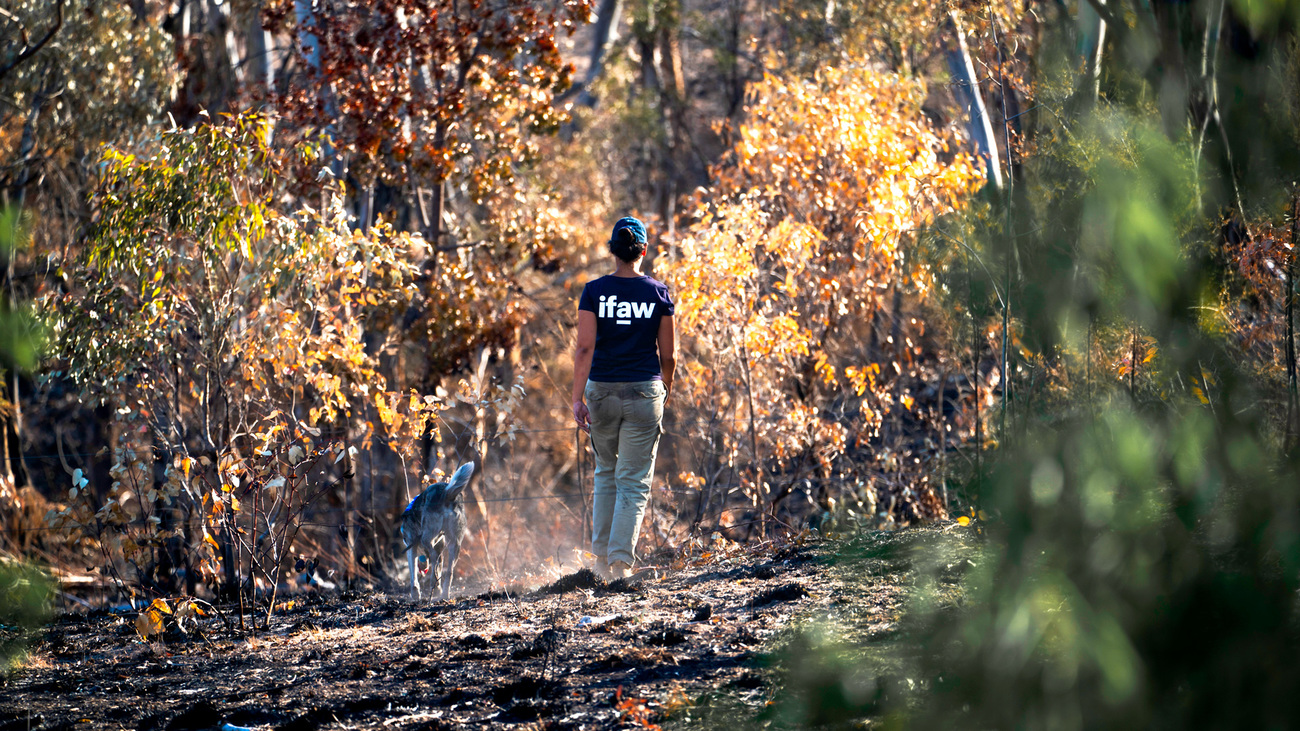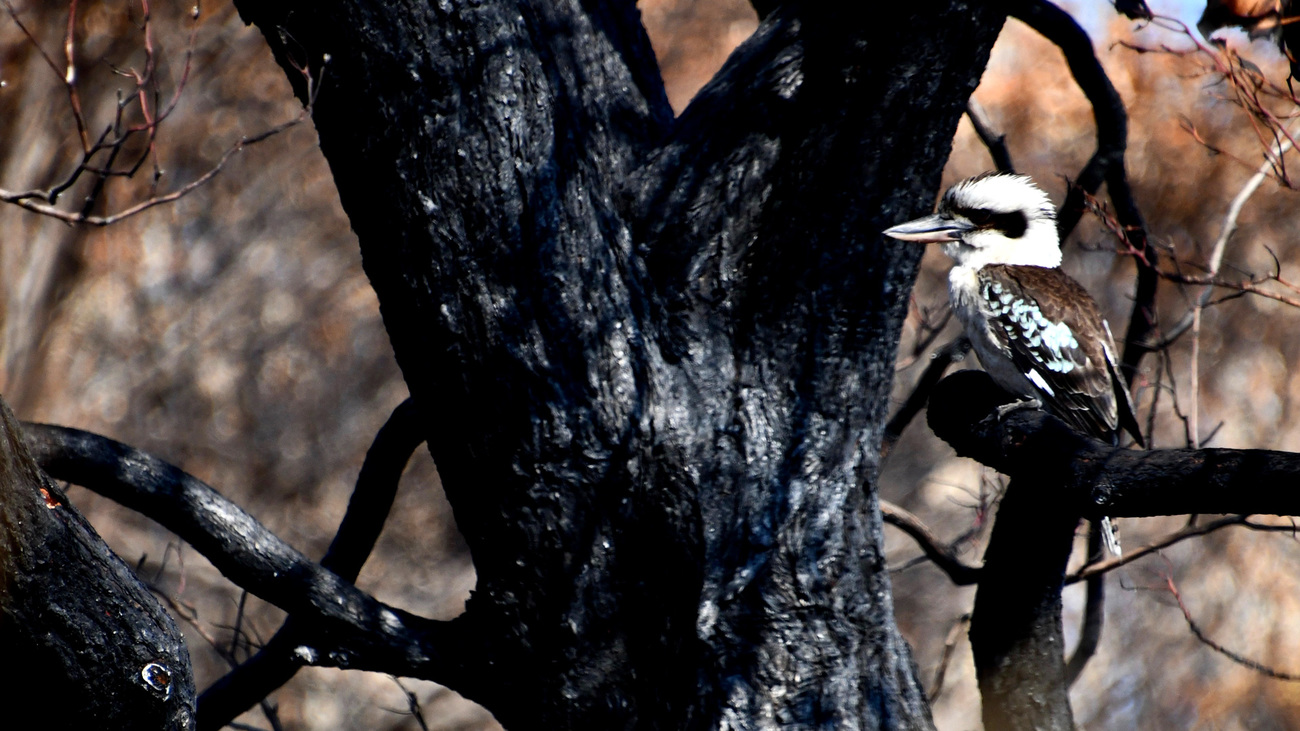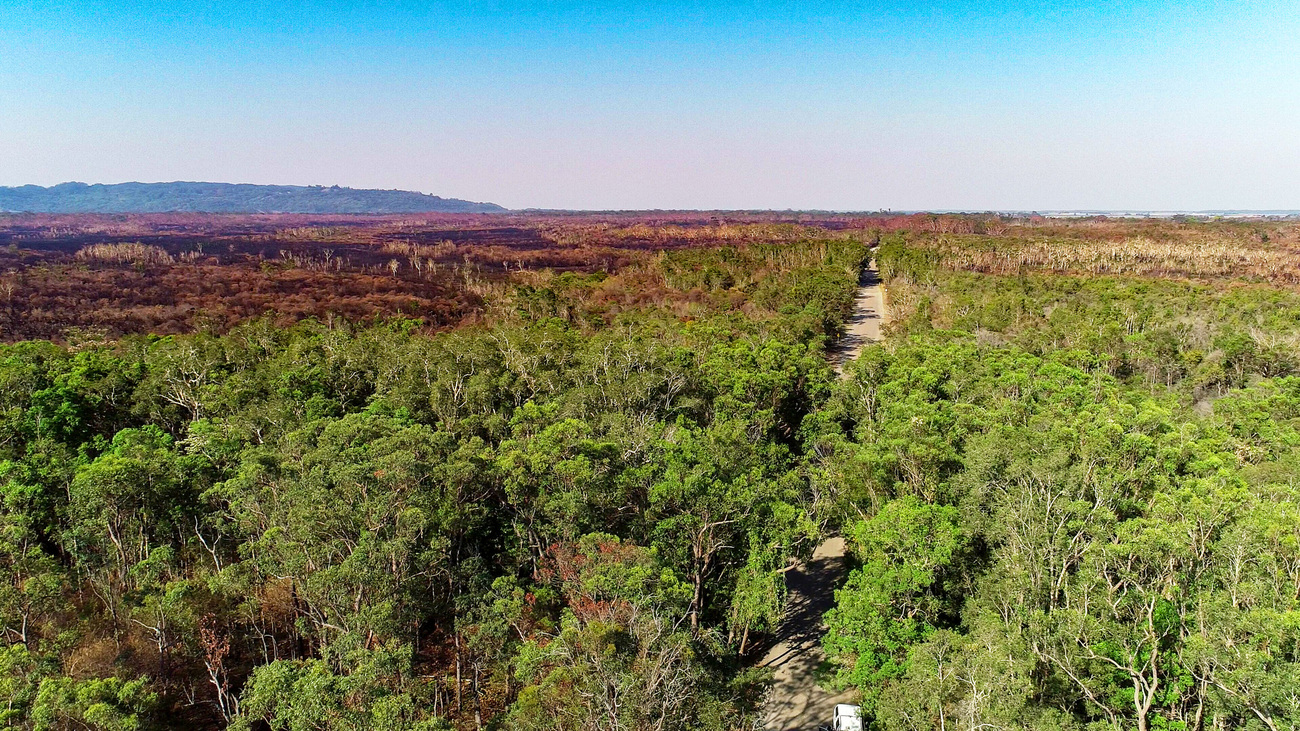Rescuing animals during bushfires - Australia
For over 30 years we’ve been on the ground helping animals affected by bushfiresRemembering Black Summer: Five years later, prioritising disaster preparedness
Remembering Black Summer: Five years later, prioritising disaster preparedness
In late 2019 the sky went black in many parts of Australia. In the following months, unprecedented bushfires killed 33 people, destroyed thousands of homes, killed approximately three billion animals, and wreaked havoc on 24 million hectares of habitat.

With our decades of experience responding to disasters around the world, IFAW took immediate action, deploying a team of local and international skilled responders to provide on-the-ground support around the clock for more than a month in the form of supplies, medications, veterinary care, food, transport assistance, and direct support to wildlife carers inundated with injured wildlife.
Now, five years later, we continue to work alongside many organisations providing practical support, training, advice and assistance.
As efforts shifted from response to long-term recovery, we also took steps to address the bigger picture: we may not be able to prevent this happening again, but we can help the wildlife and emergency response sectors be better prepared to rescue and care for injured animals in the face of future disasters. Preparedness is a key priority for IFAW’s disaster response team in Australia and around the world.
The importance of proactive preparedness
The scale of the devastation wasn’t the only shock of Black Summer. The disaster also revealed how unprepared many sectors were, including the wildlife sector, to cope with such a catastrophic event. And the consequences were profound, including the decimation of wildlife populations, the destruction of ecosystems, and extreme stress suffered by all involved.
A crucial message emerged: an effective and resilient response system requires collaboration across various sectors, organisations, and levels of government. It cannot be achieved by one individual or group. When we all work together, we can build a well-coordinated emergency response plan for wildlife across multiple levels of government and regional networks.
The wake up call
In the aftermath of the fires, it was clear that the wildlife community across the board lacked the necessary tools, training, and coordination for disaster response—particularly on such a large scale. As response efforts understandably focus on protecting people and property, wildlife is often an afterthought or forgotten altogether. This lack of planning leads to an under-resourced volunteer sector becoming overwhelmed, and disaster agencies have no choice but to be reactive.

Key steps toward better preparedness
IFAW took the initiative to address these gaps in several ways:
- We now serve as a conduit between rescue groups and government agencies in Australia. Following a series of post-fire debriefs with Victorian and NSW Governments, we were involved in the creation of Wildlife Emergency Response Teams (WERTs)—the first response personnel deployed to provide timely and effective wildlife emergency response on firegrounds, with a focus on human safety and animal welfare.
- In addition to direct field support, we worked with key wildlife rescue organisations and agencies including NSW National Parks and Wildlife Service to improve the capacity and coordination of wildlife response during bushfires. This includes training in post-fire ‘blackwalk’ search and rescue, as well as specialised wildlife first aid treatment delivered to several groups.
- We developed a suite of resources such as flatpack animal transport carriers, which are now carried in many fire response vehicles. The carriers feature a QR code which activates the IFAW Wildlife Rescue App to enable first responders to find their closest wildlife rescue group when they come across an injured native animal. The app is also written into the NSW government’s Wildlife in Emergencies guidelines for agencies to use in disasters.
- We created the IFAW disaster toolkit, an international online resource with guidelines and tools for animal carers and groups to prepare for and respond to disasters. A key part of the toolkit is free emergency evacuation workshops for wildlife rescue groups and carers, which we started delivering in 2021.
- We were instrumental in strengthening regional wildlife emergency response networks, particularly in the Northern Rivers region of NSW. We facilitate regular meetings, encourage knowledge sharing, and support interconnected emergency response frameworks and communications between the three wildlife hospitals and multiple wildlife rescue groups in the area. This collaborative model serves as a prototype for other regions.
The work continues
As another bushfire season approaches, we strive to ensure the lessons learned from Black Summer are not forgotten.
We continue to support proactive preparedness through training, coordination and resource sharing between wildlife organisations and with government and response agencies. And we continue to advocate for better recognition and resourcing for the critical role the wildlife rescue community plays in disaster response.
By taking such actions ahead of future disasters, we hope to mitigate potential challenges and ensure the survival of both wildlife and human communities in the face of increasingly common threats.

How can you help?
Download the IFAW Wildlife Rescue App to ensure you can get immediate help for injured wildlife in Australia.
To learn more about our training for the wildlife and emergency response sectors, please email IFAW wildlife rescue officer Robert Leach at rleach@ifaw.org.
Related content
Our work can’t get done without you. Please give what you can to help animals thrive.